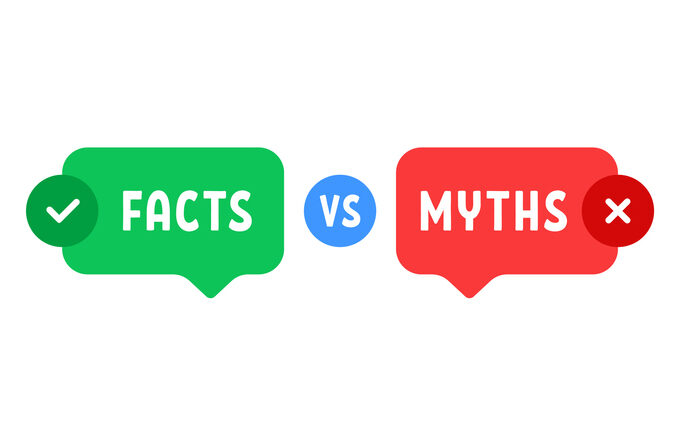Pediatricians have been getting a lot of bad news about their patients lately: More children at younger ages are developing high cholesterol. I certainly don’t need to tell you that obesity is an epidemic in the United States. Obesity and a family history of high cholesterol levels certainly play a significant role in the development of childhood hypercholesterolemia (high cholesterol levels). However, you should know that not all children with high cholesterol are obese — or even overweight.
Over the last 40 or so years, research has shown that the atherosclerotic** changes that can lead to cardiovascular disease (CVD) begin early in life (as early as 2 years old) and continue to progress throughout life***. We know that genetics play an important role in susceptibility to early CVD, but factors like diet and excercise are just as important in determining the progress of the disease. And in some cases, an unhealthy diet and sedentary lifestyle can advance the onset of a heart attack by 16 years^.
The Child and Adolescent Trial for Cardiovascular Health reported that 13% of fourth graders had abnormally high total cholesterol levels. Data from the 1988–1994 NHANES (National Health and Nutrition Examination Surveys) for ages 4 to 19 years showed that the mean total cholesterol concentration was 165 mg/dL (the acceptable level for this age group is less than 170). What’s more, several studies* have shown that — although cholesterol levels may fluctuate slightly during puberty — approximately 70% of school-aged children with high cholesterol levels will go on to have high cholesterol levels in adulthood. In other words, unhealthy habits — and their consequences — tend to stick.
Lipid Screening and Cardiovascular Health in Childhood; Stephen R. Daniels, Frank R. Greer and the Committee on Nutrition. Pediatrics 2008; 122; 198–208
Let’s start with the basics about lipid levels. LDL: Low-density lipoprotein, also known as “bad cholesterol,” is increased by the intake of saturated fats from animal sources like whole milk, cheese, butter, ice cream, red meat, eggs and chicken skin. Children between the ages of 2 and 19 years should have LDL levels less than 110. HDL: High-density lipoprotein, also known as “good cholesterol,” can remove harmful atherosclerotic plaques from your arteries — so the more, the better. HDL levels are decreased [in the pediatric population] by poor nutrition, obesity, second-hand smoke and lack of exercise. Children should have HDL levels higher than 40.
Triglycerides: Interestingly, the level of this fat in the body is influenced by the intake of refined sugars. This, among other reasons, is why your pedatrician may nag you about the amount of juice and other sugary drinks and foods in your child’s diet.
What can I do to help my child?
Sugar and Fat
We’ve talked about why it’s important to keep refined sugars to a minimum. The amount of fats and, more importantly, saturated fats in a child’s diet is a little more difficult to comprehend. Basically, we want to keep the amount of saturated fats in the diet at less than 10% of the total calories for the day. Using average children with average activity levels, this means that anyone 14 years and older should be consuming less than 20g of saturated fat total for the day. Children between 2 and 13 years old should have less than 18g of saturated fat for the day^. (Children under 2 years old require higher amounts of saturated fats, which is why pediatricians generally recommend the use of whole milk until 2 years of age.) Here’s an example of how you can apply this information to your daily life using whole milk:
- A serving of whole milk contains 8g of fat and 5g of saturated fat.
- The food label on the milk jug lists the amount of saturated fat as 25% DV (one-fourth of your recommended daily intake).
- This makes sense, because we just said that the total saturated fat for the day should be less than 20g, and 5g would be 25% of 20g.
- However, food labels are based on a 2,000 calorie diet! Toddlers (again, depending on their activity level) only need about 1,200 calories a day; elementary school children only need about 1,500 calories a day and middle-schoolers only need about 1,800 calories per day.
- Uh-oh. That was only one glass of whole milk.
Natural Cholesterol-lowering Agents
Some of you are already cautious about the amount of saturated fats and refined sugars in your child’s diet, plus you’re encouraging regular exercise, and yet your child’s cholesterol levels are still high. At this point, individual treatment should be addressed with your pediatrician. In the meantime, cardiologists^^ are recommending additional foods that may help reduce cholesterol levels (and certainly can’t hurt):
- Fiber (beans, vegetables, nuts, whole grains)
- Psyllium husk (may be found in metamucil cookie bars)
- Walnuts and almonds (sources of vitamin E and omega-3 fatty acids)
- Soy
- Red yeast rice
- Plant sterols (Benechol)
- Vitamins E, C
- Folic Acid
- Green tea
- Garlic
- Cheerios
- Omega-3 gummy bears
* The Muscatine Study and The Bogalusa Heart Study
** Atherosclerosis is the process of lipid (fat) deposition in the arteries that may lead to heart attack and stroke.
*** Actually, it was until the 1950s that we understood that atherosclerosis can begin even as early as adolescence. I heard a rather unfortunately phrased comment on ReachMD (XM Radio station for medical professionals) recently that the only good that ever came out of the [wartime] draft was that we were able to recognize early cardiovascular disease in the arteries of young soldiers.
^ Lipid Screening and Cardiovascular Health in Childhood; Stephen R. Daniels, Frank R. Greer and the Committee on Nutrition. Pediatrics 2008; 122; 198–208
^^ For more specific levels based on a child’s age, gender and activity level, read Dietary Guidelines for Americans 2005 http://www.health.gov/dietaryguidelines/.



